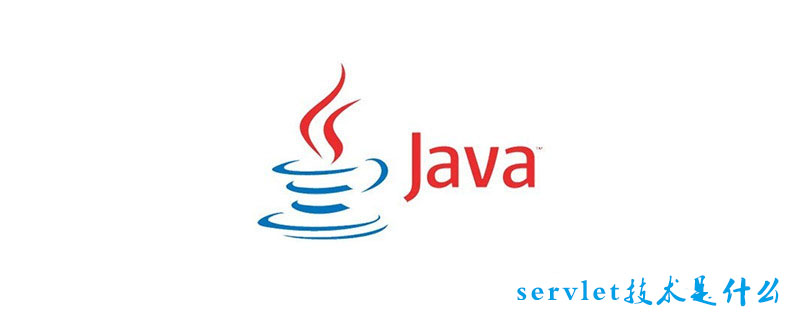Servlet is a platform- and protocol-independent server-side Java technology that can be used to generate dynamic Web pages. Servlets are Java programs that use the Java Servlet Application Programming Interface (API) and related classes and methods. Servlet mainly processes HTTP requests from the client and returns a response. Usually Servlet refers to HttpServlet, which is used to handle HTTP requests. Requests that can be processed include: doGet() doPost() service(), etc. When developing Servlet, you can directly inherit javax.servlet.http.HttpServlet.
Recommended course: Java Tutorial.

Servlet and Servlet container
Java Servlet (Java server applet) is a web component based on Java technology, running on The server side is managed by the Servlet container and is used to generate dynamic content. Servlet is a platform-independent Java class. Writing a Servlet is actually writing a Java class according to the Servlet specification. Servlets are compiled into platform-independent bytecode and can be dynamically loaded into a web server that supports Java technology for running.
The Servlet container (Servlet engine) is a part of a Web server or application server that is used to provide network services on top of sent requests and responses, decode MIME-based requests, and format MIME-based responses.
Servlet cannot run independently and must be deployed into a Servlet container. The container instantiates and calls Servlet methods. The Servlet container contains and manages Servlet during the Servlet life cycle.
Servlet technology features
Efficient, convenient, cross-platform, powerful, flexible and scalable, shared data, safe.
1. Efficient
Only one Java virtual machine is running on the server. Its advantage is that when multiple requests from the client are accessed, the Servlet allocates a thread for each request. rather than process.
2. Convenience
Servlet provides a large number of utility routines, such as processing difficult-to-complete HTML form data, reading and setting HTTP headers, processing cookies and tracking sessions, etc.
3. Cross-platform
Servlet is written in Java classes and can run on different operating system platforms and application server platforms.
4. Powerful function
In Servlet, many tasks that are difficult to complete with traditional CGI programs can be easily completed using Servlet technology. For example, Servlets can interact directly with Web servers, but ordinary CGI programs cannot. Servlets can also share data between various programs, making functions such as database connection pools easy to implement.
5. Flexibility and scalability
Web applications developed using Servlets have flexible applications and can be expanded at will due to the inheritance of Java classes, constructors and other characteristics.
6. Shared data
Database connection pooling can be easily implemented by sharing data between Servlets. It can easily manage user requests, simplify the operation of Session and obtain the previous page information, but the communication between CGI is poor. Since each call to a CGI program starts a new process, communication between calls usually takes place through files and is therefore quite slow. Communication between different CGI programs on the same server is also quite troublesome.
7. Security
Some CGI versions have obvious security weaknesses. Even applying the latest standards, the system does not have a basic security framework. Java defines a complete security mechanism, including SSL\CA certification, security policy and other specifications.
Servlet dynamic page stage
User access page process:
Users access the Servlet by clicking on a link or directly entering the URL.
After the Web server receives the request, it hands it to the Servlet container.
The Servlet container instantiates the Servlet.
Call Servlet specific methods to process the request and generate a response.
The response is returned to the Web container by the Servlet container.
The Web container wraps this response and sends it to the browser in the form of an HTTP response.
The above is the detailed content of What is servlet technology. For more information, please follow other related articles on the PHP Chinese website!